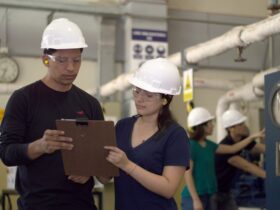Unlocking the potential of clean energy for underserved communities is a key step towards creating a more equitable and sustainable world. With approximately 789 million people lacking access to electricity and millions more experiencing energy poverty or unreliable access, addressing the energy divide has become a pressing global challenge. In this blog post, we will explore the transformative power of clean energy solutions in empowering the underserved and achieving sustainable development goals. By implementing innovative energy poverty solutions, we can pave the way for a brighter, more sustainable future.
Understanding the Energy Divide
Energy poverty, defined as limited access to modern energy services, is a stark reality for many underserved communities. These marginalized populations often rely on polluting and inefficient forms of energy, such as solid fuels, kerosene, or diesel generators. As a result, they not only face economic limitations but also suffer from adverse health effects and environmental degradation.
According to recent data, nearly 85% of people without electricity live in rural areas, with Sub-Saharan Africa and South Asia being the regions most affected by this energy divide. Women and children are disproportionately impacted, as inadequate lighting and cooking solutions hinder education and safety.
Clean Energy Solutions: A Path Towards Empowerment
Clean energy solutions, such as solar, wind, and hydropower, have emerged as efficient and sustainable alternatives to traditional fossil fuels. By harnessing the power of renewable energy, underserved communities can break free from the cycle of energy poverty and unlock new possibilities.
Renewable energy sources, especially solar power, have shown great potential in providing electricity to remote and off-grid areas. Solar energy is versatile, easy to install, and has minimal maintenance requirements, making it ideal for communities without access to centralized energy grids. Similarly, wind and hydropower can be harnessed in regions blessed with these natural resources, providing clean and reliable energy to the underserved.
Beyond environmental benefits, clean energy solutions offer a multitude of advantages for underserved communities. Affordable and sustainable electricity enables the operation of small businesses, improves access to healthcare, enhances education opportunities, and fosters entrepreneurship. By eliminating the need for expensive and polluting fuels, clean energy also frees up financial resources that can be allocated towards other essential needs.
Overcoming Barriers: Policy and Finance
Despite the numerous benefits, the adoption of clean energy solutions in underserved communities faces several hurdles such as the lack of climate financing initiatives. In addition, one of the key barriers is the lack of supportive policies and regulations that facilitate the integration of renewable energy into the existing energy framework.
Governments and policymakers have a vital role to play in creating an enabling environment for clean energy projects. They can design and implement policies that incentivize investments, reduce bureaucratic red tape, and promote collaboration between different stakeholders. By setting ambitious renewable energy targets, governments can encourage the growth of the clean energy sector and ensure that it reaches the underserved communities.
Financing is another critical aspect that needs to be addressed. The high upfront costs associated with clean energy installations often deter communities and individuals with limited resources. However, innovative financing mechanisms, subsidies, and community-led models are emerging as effective solutions to bridge the finance gap.
To make clean energy solutions accessible and affordable, financial institutions and development agencies are increasingly partnering with local communities. Through microfinance initiatives, crowdfunding platforms, and pay-as-you-go models, the financial burden is distributed, making clean energy solutions more attainable for underserved populations.
Addressing Socio-cultural Factors
Clean energy initiatives need to consider the socio-cultural aspects of the communities they aim to serve. Achieving sustainable impact requires engaging marginalized communities as active participants rather than passive recipients.
Cultural sensitivity is crucial for successful implementation. Taking into account local practices, customs, and beliefs helps to ensure that clean energy solutions align with community values. In addition, recognizing the gender dynamics within the community is vital. Women often bear the brunt of energy poverty and play a significant role in household energy management. Their involvement and empowerment are essential for the success and sustainability of clean energy projects.
Community engagement is a key pillar in realizing the potential of clean energy solutions. By involving local stakeholders in the decision-making process, encouraging their active participation, and providing training and capacity-building opportunities, projects can effectively address the unique needs and aspirations of underserved communities.
Case Studies: Realizing Impact on the Ground
The transformative potential of clean energy solutions is best understood through real-world examples. Many successful initiatives have demonstrated how clean energy can empower underserved communities by enhancing livelihoods and overall well-being.
One such case is the Solar Sister program, operating in several African countries. This initiative trains and supports women entrepreneurs to establish their clean energy businesses, specializing in solar products. By equipping women with technical skills and business knowledge, Solar Sister not only provides access to sustainable energy but also empowers women economically and socially.
In India’s Sunderbans region, the Sunderbans Development Board implemented a project that combined solar energy and rainwater harvesting. This ingenious solution provided clean drinking water and reliable electricity to remote island communities, significantly improving their living conditions.
These and many other inspiring projects demonstrate that clean energy can be a powerful tool for uplifting the underserved, breaking the cycle of poverty, and fostering sustainable development.
Conclusion
Addressing the energy divide and empowering the underserved with clean energy solutions is crucial for a more equitable and sustainable future. Through renewable energy sources, favorable policies, innovative financing mechanisms, and socio-culturally inclusive approaches, we can unlock new possibilities and opportunities for marginalized communities.
Collaborative efforts between governments, NGOs, international organizations, and local communities are essential in scaling up clean energy access and bridging the energy gap through energy transition financing initiatives. By joining forces and investing in clean energy solutions, we can create a world where everyone has access to affordable, reliable, and sustainable energy, leaving no one behind.






